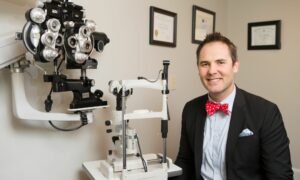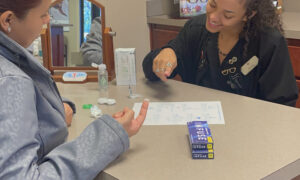
Oct. 28, 2015
Johnson & Johnson Vision Care, Inc., presented data at Academy 2015 New Orleans, the annual meeting of the American Academy of Optometry (AAO), which showed that decline in contact lens performance correlates with the number of activities performed in a day. The study found that 59 percent of contact lens wearers reported declines in lens performance throughout the day, whether wearing daily disposable, two-week or monthly contact lenses.
“In today’s world of multi-tasking and multi-screen living, we demand a lot from our eyes each day,” says Millicent Knight, OD, vice-president of professional affairs, Johnson & Johnson Vision Care, Inc. North America. “With this study, we aimed to better understand the relationship between the number of activities a patient takes part in and their contact lens performance.
The results support Johnson & Johnson’s hypothesis that there is a direct correlation. The more activities a patient does throughout the day, the more likely they are to experience environmental shifts and changes in humidity, airflow and temperature that can impact their tear film.”
The study authors surveyed a total of 243 contact lens wearers aged 18 to 39 who wore daily disposable (n=101) or reusable (n=142) lenses. Short surveys were sent to study participants every two hours via a mobile application on their smartphones to measure lens comfort, vision and satisfaction.1
Participants experienced a variety of performance patterns regardless of whether they used daily disposable or daily reusable lenses. For 41 percent of respondents, lens performance was consistent throughout the day.
However, the other 59 percent experienced one-of-four patterns of performance decline, of which the most common was a fluctuating decline (24 percent of decliners). Nineteen percent experienced a more continuous decline, while the remainder experienced either slight declines (8 percent) or sharp end-of-day declines (8 percent).
Performance decline was more common in participants who did a variety of activities throughout the day: 36 percent of decliners participated in 10 or more different activities — such as working on their laptop, sending texts on their phone, using mobile applications or doing homework — throughout the day, while only 21 percent of those whose contacts maintained performance did. Changes in environments were also more common in those who experienced declines (7.3 versus 5.8).
Feelings of tired eyes and dryness were the most common symptoms articulated by the 59 percent of contact lens wearers who experienced a performance decline. These symptoms also most highly correlated with lens performance.
Dr. Knight went on to say, “The insights gained from this study may help prompt eyecare professionals to better understand first, their patients’ lifestyles, and then choose the right contact lens. This is critically important as certain lens materials may work better based on a patient’s specific need.”
References
1. Mathews K. et al. Exploring Variability in Soft Contact Lens Performance throughout the Day. Abstract. 2015 American Academy of Optometry (AAO) Annual Meeting. October 8, 2015.



























